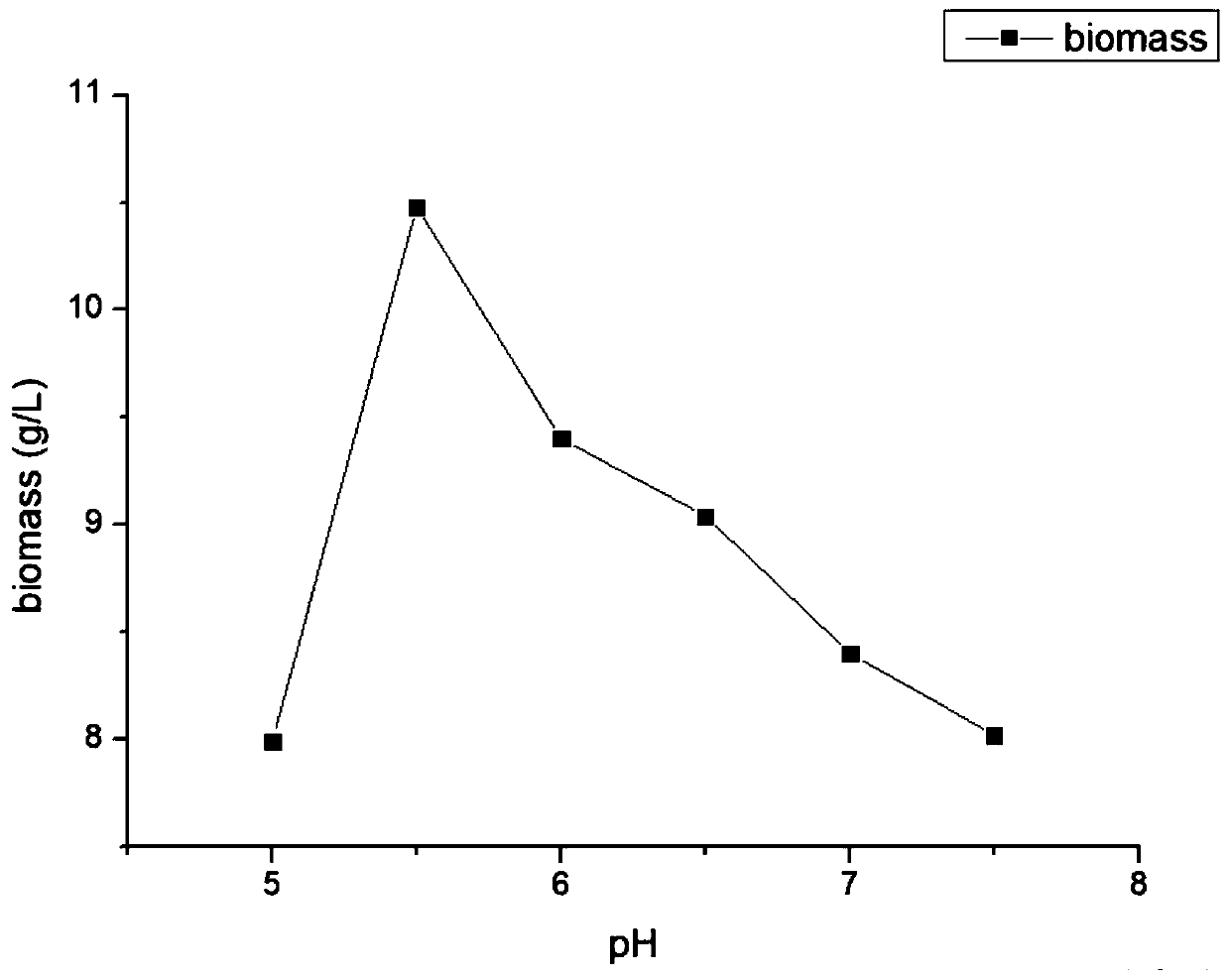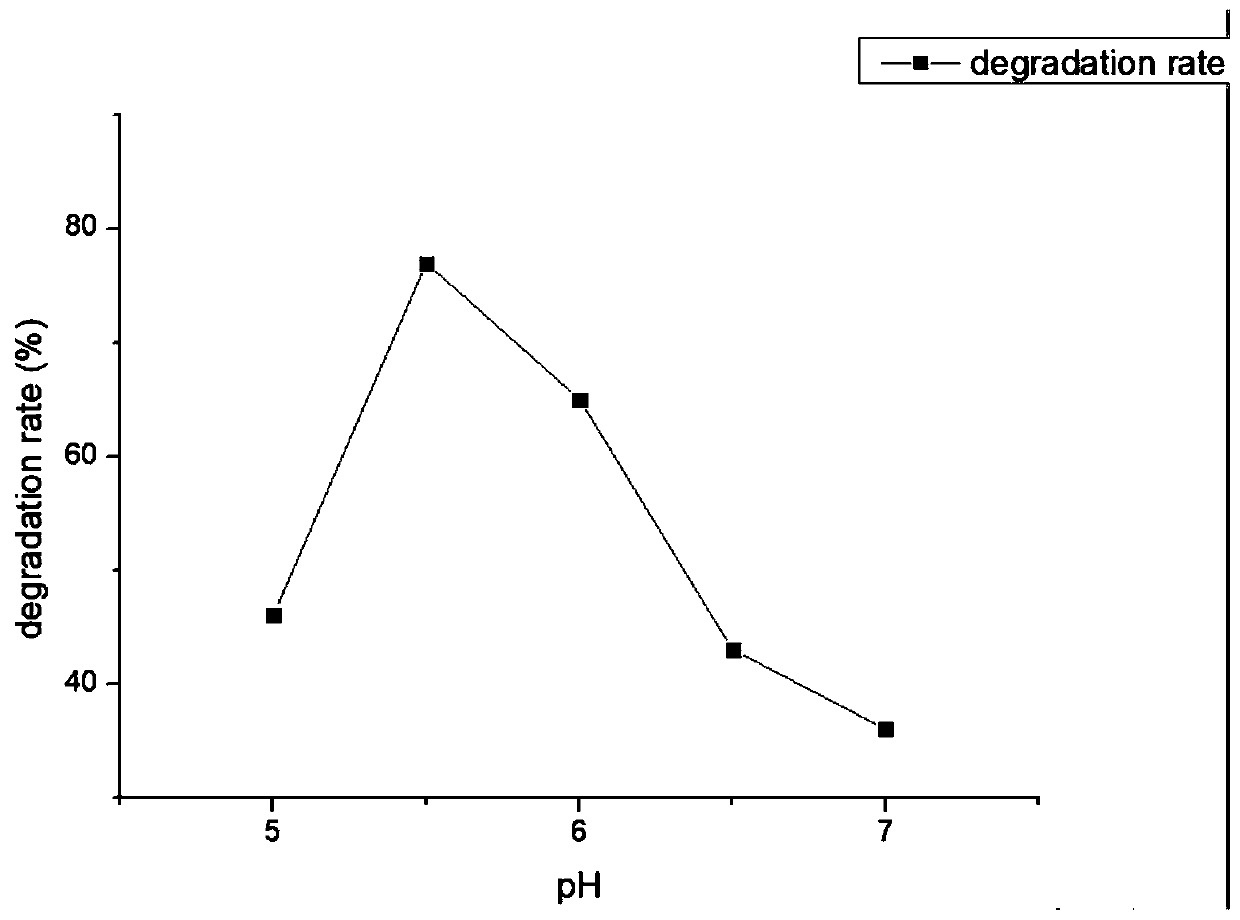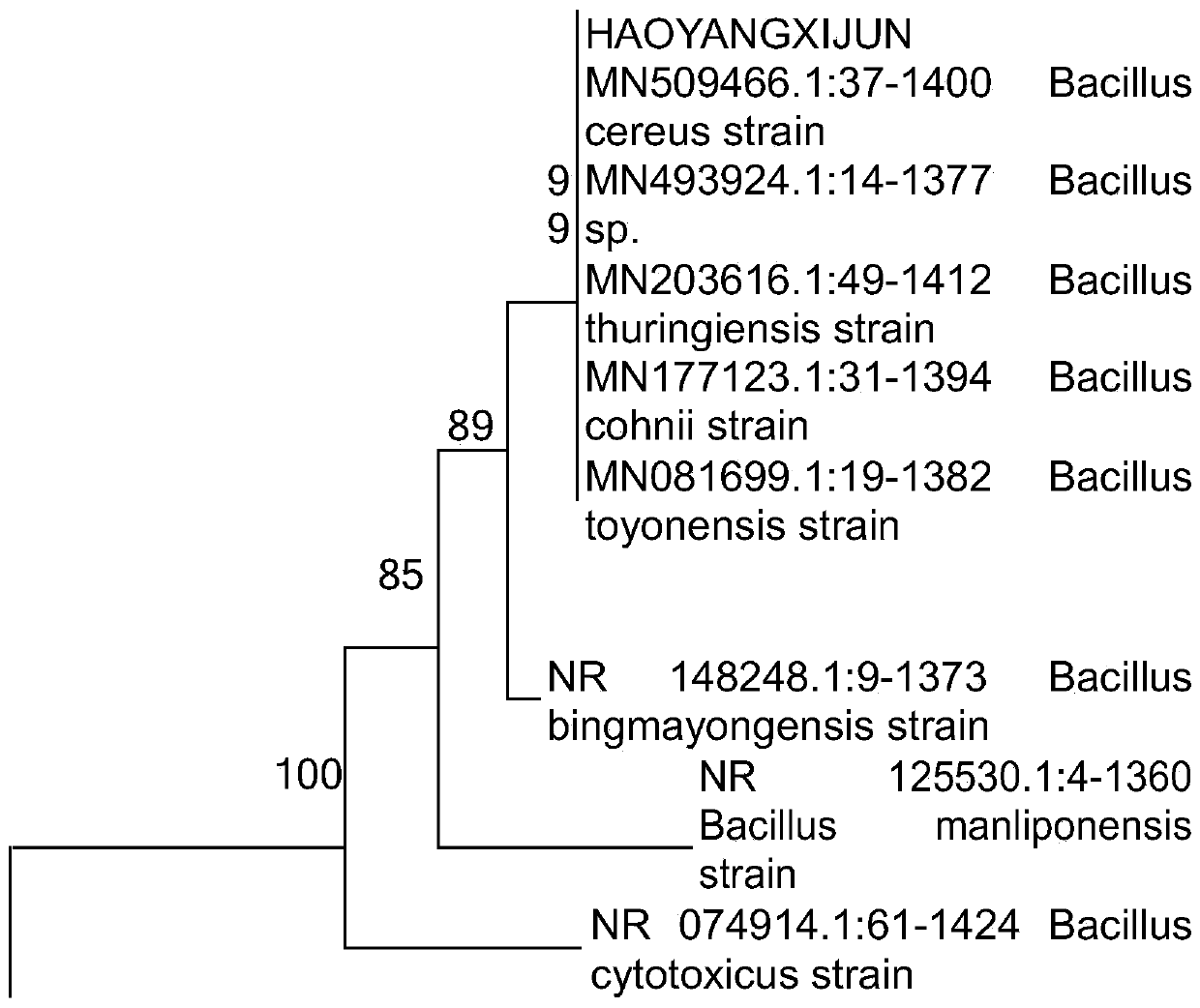Characteristics of bacteria for degrading glyphosate
A technology of glyphosate, degradation rate, applied in the field of environmental biology
- Summary
- Abstract
- Description
- Claims
- Application Information
AI Technical Summary
Problems solved by technology
Method used
Image
Examples
Embodiment 1
[0017] Weigh 0.1g of aerobic bacteria and dissolve in 100ml of normal saline, shake well to make 1g / L bacterial solution. Take six 250ml Erlenmeyer flasks, add 4.6g BPDA nutrition powder and 250ml deionized water, mix well and seal. Put the prepared nutrient solution into an autoclave for sterilization. After the sterilization, when the temperature of the system is cooled to 70°C, quickly take out the Erlenmeyer flask and move it to a sterile ultra-clean workbench. Add a series of glyphosate in mass gradient to it, make the BPDA culture solution containing a series of concentration gradient glyphosate after shaking up. Pour the culture solution into a petri dish to cool down to make a BPDA solid medium containing a series of concentration gradients. Use a pipette gun to pipette 0.1ml of the bacterial solution and spread it evenly on a solid petri dish, seal the edge with a parafilm and place it in a 37°C incubator for 24 hours. bacterial growth as figure 1 Shown: In the BP...
Embodiment 2
[0019] Prepare 6 parts of BPDA liquid medium with a volume of 100ml at room temperature, and the concentration of glyphosate added to each part is 2g / L. After adjusting the pH values to 5.0, 5.5, 6.0, 6.5, 7.0, and 7.5, add bacteria The concentration is 1g / L. After cultivating in a shaker at 120 rpm at 37°C for 24 hours, the bacterial liquid was centrifuged and dried, and the dry weight of the bacteria was weighed. The results obtained are shown in Table 1 and figure 2 Shown: within a certain range, with the increase of pH value, the bacterial growth first increases and then decreases. When the pH value is 5.5, the bacterial growth reaches the maximum value.
[0020] The influence of table 1 pH value on bacterial growth
[0021]
Embodiment 3
[0023] Prepare 10 parts of BPDA liquid medium with a volume of 100ml at room temperature, divide each group into two groups of A and B with 5 parts, the concentration of glyphosate added in A is 2g / L, and group B does not add glyphosate as Blank control group. After adjusting its pH value to 5.0, 5.5, 6.0, 6.5, 7.0 respectively, the concentration of bacteria added was 1g / L. After culturing in a shaker at 120 rpm at 37°C for 24 hours, the remaining amount of glyphosate was measured by the national standard method, and then the degradation rate of glyphosate by bacteria was obtained. The results obtained are shown in Table 2 and image 3 Shown: within a certain range, as the pH value increases, the degradation of glyphosate first increases and then decreases, and the degradation rate reaches the maximum value of 77% when the pH is 5.5.
[0024] The influence of table 2pH value on bacterial degradation rate
[0025] 5 5.5 6 6.5 7 Degradation rate 46% 77% ...
PUM
 Login to View More
Login to View More Abstract
Description
Claims
Application Information
 Login to View More
Login to View More - R&D
- Intellectual Property
- Life Sciences
- Materials
- Tech Scout
- Unparalleled Data Quality
- Higher Quality Content
- 60% Fewer Hallucinations
Browse by: Latest US Patents, China's latest patents, Technical Efficacy Thesaurus, Application Domain, Technology Topic, Popular Technical Reports.
© 2025 PatSnap. All rights reserved.Legal|Privacy policy|Modern Slavery Act Transparency Statement|Sitemap|About US| Contact US: help@patsnap.com



